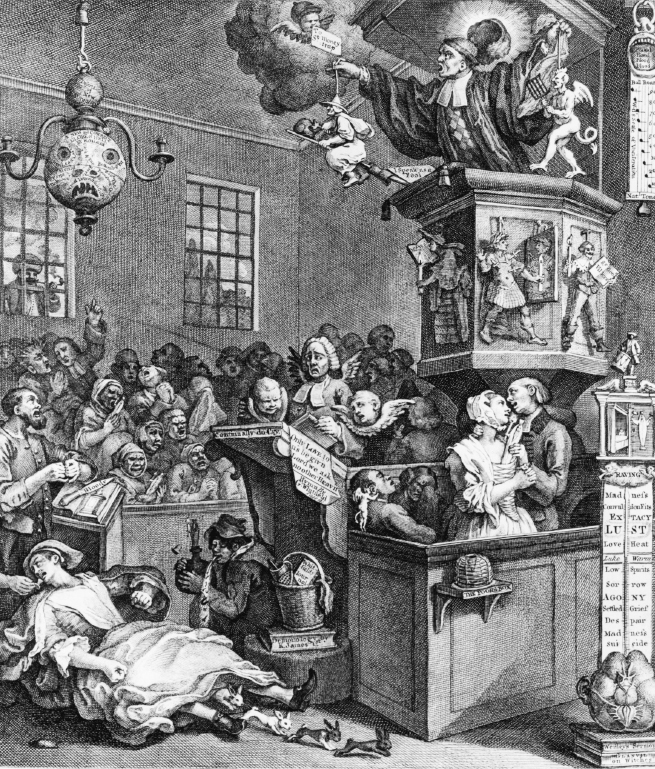Understanding Western Society
Printed Page 566
| > | What role did religion play in eighteenth-century society? |

TTHOUGH THE CRITICAL SPIRIT of the Enlightenment made great inroads in the eighteenth century, the majority of ordinary men and women, especially those in rural areas, retained strong religious faith. The church promised salvation, and it gave comfort in the face of sorrow and death. Religion also remained strong because it was embedded in local traditions and everyday social experience.
Yet the popular religion of village Europe was also enmeshed in a larger world of church hierarchies and state power. These powerful outside forces sought to regulate religious life at the local level. Their efforts created tensions that helped set the scene for vigorous religious revivals in Protestant Germany and England as well as in Catholic France.